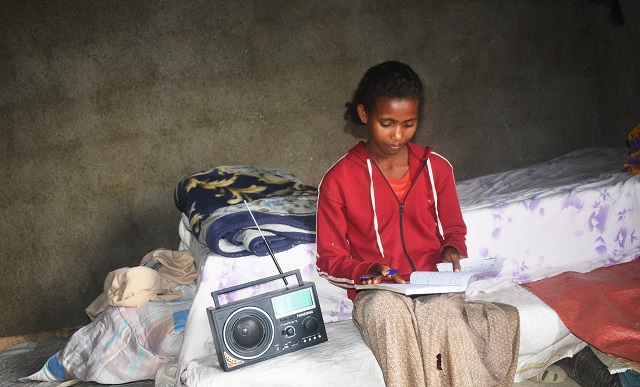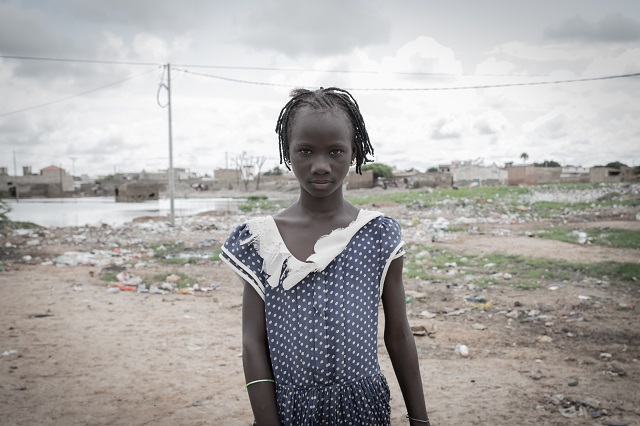Digital Divide puts Education of Millions at Risk

At a time of year when children usually prepare to go back to school, the COVID-19 pandemic has created a new educational reality where many children will go online.
However, a digital divide means millions of children will fall further behind.
Although online learning has worked for many children and young people around the world, those living in vulnerable conditions - with limited to no access to electricity and the internet, or whose schools lack the capacity to offer digital learning – risk missing out on their education for another academic year.
Of the 1.5 billion students whose schools closed, about 463 million – over 30 percent - were unable to gain access through remote learning, according to Unicef, the United Nations agency for children. The disparities are particularly acute in low-income countries in Sub-Saharan Africa where nearly 90% of students do not have access to a computer and 82% lack household internet, according to UNESCO.
“While many children have switched to online learning, the majority of children in Africa are frustrated and anxious, much to the dismay of parents and educators who are worried about their future,” says SOS Children’s Villages International Director for West, North and Central Africa Benoit Piot.
This crisis, he says, has exposed a pre-existing problem, with almost one third of the world’s young people already digitally excluded before the pandemic started. For all children to be able to learn, connectivity for remote education needs to be improved and they need access to educational materials.
Learning through radio
In Ethiopia, 13-year-old Tigist charges her solar-power radio after each school broadcast. She and her family got the radio from SOS Children’s Villages in Ethiopia, which distributed them in April to some 400 children who had no other way to study.

“We do not have a table in our house and so during lessons, I place the radio next to me,” explains Tigist. “I place the exercise book on my lap and write quickly to capture what the teacher says. I study hard to achieve my dreams. That is the only way I will manage to build my mother a better house.”
Ten-year-old Khadi* of Kaolack, Senegal, is one of those children whose education was upended by the COVID-19 pandemic.
She lives in a one-bedroom sheet metal house with her mother, father and three older sisters, in a neighbourhood littered with waste. It is a harsh living environment, but this is where Khadi has spent most of her time since schools in Senegal closed in May.

“My sisters want to go back to school, but I feel safer here at home,” says Khadi, who has anxiety about the virus.
Sitting in the family courtyard, Khadi points to a radio where she listens to classes to try to keep up with her schooling. Radio can be frustrating for children especially since they cannot interact with the teacher and ask questions.
In Senegal, beyond e-learning digital platforms and television, national radio channels and community networks began airing a radio-based learning programme in a bid to extend learning opportunities to children and young people without access to internet, digital devices and TV.
“National channels broadcast educational programmes, but content cannot take into account the grade level of each student,” says Saly Bopian, who heads the SOS Children’s Villages family strengthening programmes in Kaolack, working with families such as Khadi’s.
While teachers in wealthier countries can use online tools as they receive training to do so, in low- and middle-income countries like Senegal, these options do not always exist, she explains.
Bridge the digital divide
COVID-19 has the potential to transform education for years to come, says Adelise Baha, SOS advocacy advisor for West, North and Central Africa. The global shift means a continent as large as Africa may need to adapt its educational systems, which requires resources to bridge the digital divide. However, access to electronic devices requires money, space and access to stable electricity none of which are priorities for families who are seeing their livelihoods disappear due to this pandemic.
“Digital learning, no matter its intrinsic inadequacies or advantages, is the method of instruction, which, for the near future, will be taking a prominent role in education,” she says. “However, considering the wide range of local realities, and the fact that widely accessible mediums like radio and television are centred on mass education and not targeting children that are not learning under normal school settings, there is no one-solution-fits-all scenario.”
Ensuring learning continuity for every child in the time of COVID-19 by using child-friendly methods should be one of our most pressing focus, she adds.
*Names changed to protect the privacy of children
Canadians wishing to help vulnerable children are encouraged to sponsor a child, sponsor a Village or make a Donation today to our COVID-19 response.
